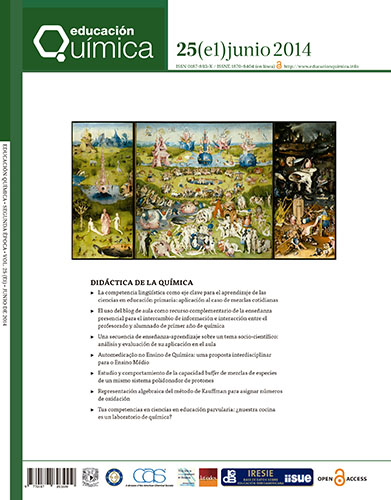‘Counting ions’ in Alfred Werner’s coordination chemistry using electrical conductivity measurements
Contenido principal del artículo
Resumen
From 1888 till 1892 Alfred Werner, the founder of coordination chemistry, developed together with his friend Arturo Miolati electrical conductivity of ionic complexes as an auxilliary analytical tool for structural elucidations of complexes. The used electrical conductivity device was based on a design of Wilhelm Ostwald consisting of a generator for alternating current (induction apparatus with Wagner hammer), a measuring cell with platinated electrodes and a rheostatic part including a buzzer for balancing resistivity conditions. Electrical conductivities were examined in the ion-isomeric series of Pt(II)(NH3)nCl2 (n = 0 – 4), Pt(IV)(NH3)nCl4 (n = 0 – 6) and Co(III)(NH3)nCl3 (n = 0 – 6) complexes producing approximately V-shaped curves in dependence of the stoichiometry factor n. Replacing in the coordination spheres neutral Lewis base type ligands by ‘anionic residues’ generated charged complexes, which by conductivity measurements laid grounds for Alfred Werner’s coordination theory [primary (from ‘anionic residues’) and secondary valencies (from Lewis bases)] and the Nobel Prize in 1913. From 1893 on seven PhD theses were prepared in Alfred Werner’s group, which dealt with conductivity measurements establishing identification processes of complexes by ‘ion counting’. In 1902 Alfred Werner ceased to apply electrical conductivity in his group switching to meanwhile more timely coordination chemistry fields.
Detalles del artículo

Educación Química por Universidad Nacional Autónoma de México se distribuye bajo una Licencia Creative Commons Atribución-NoComercial-SinDerivar 4.0 Internacional.
Basada en una obra en http://www.revistas.unam.mx/index.php/req.
